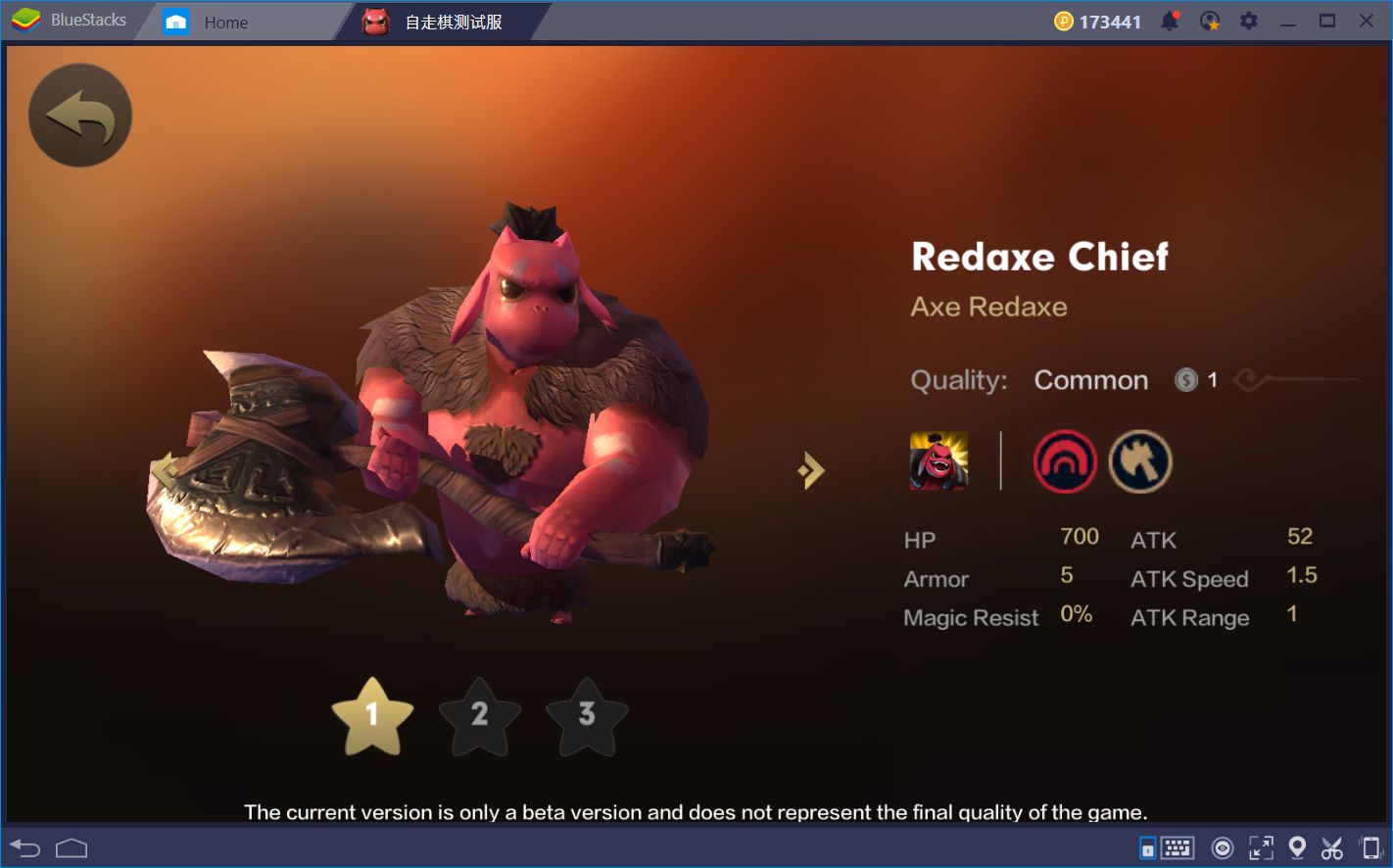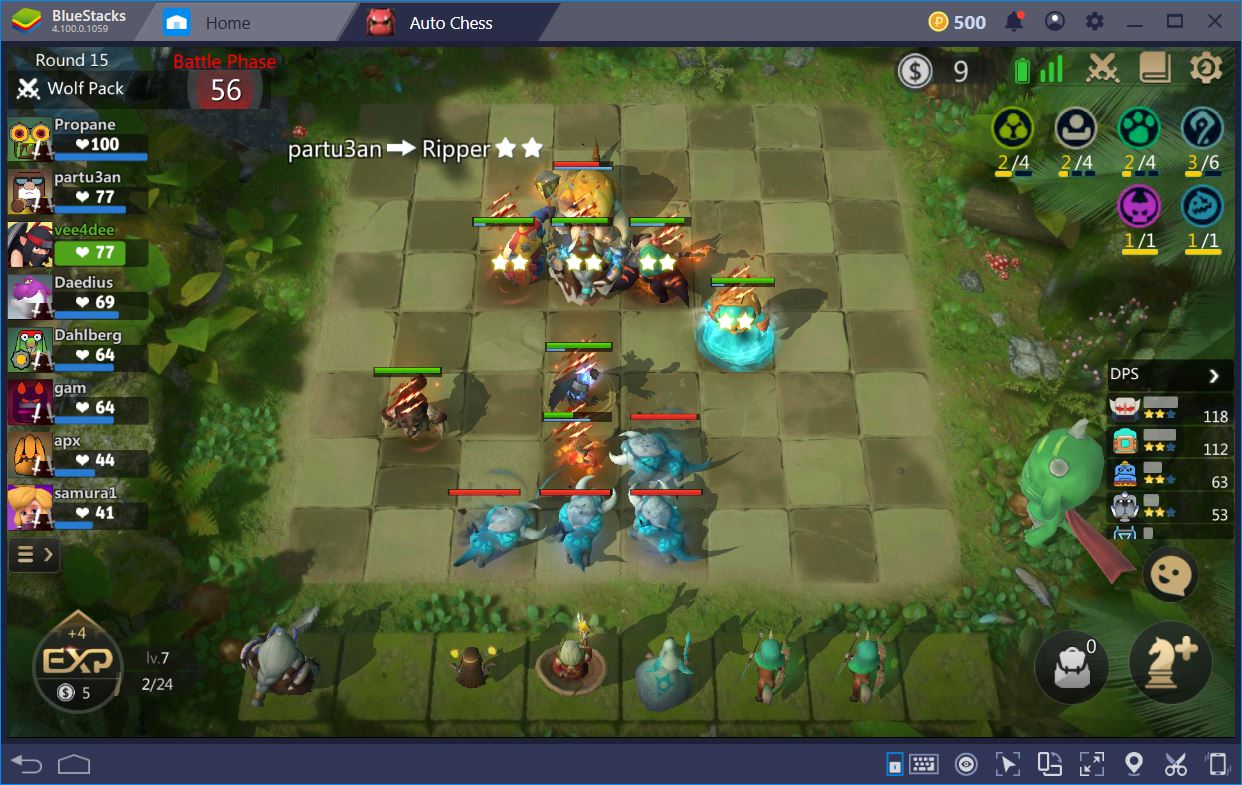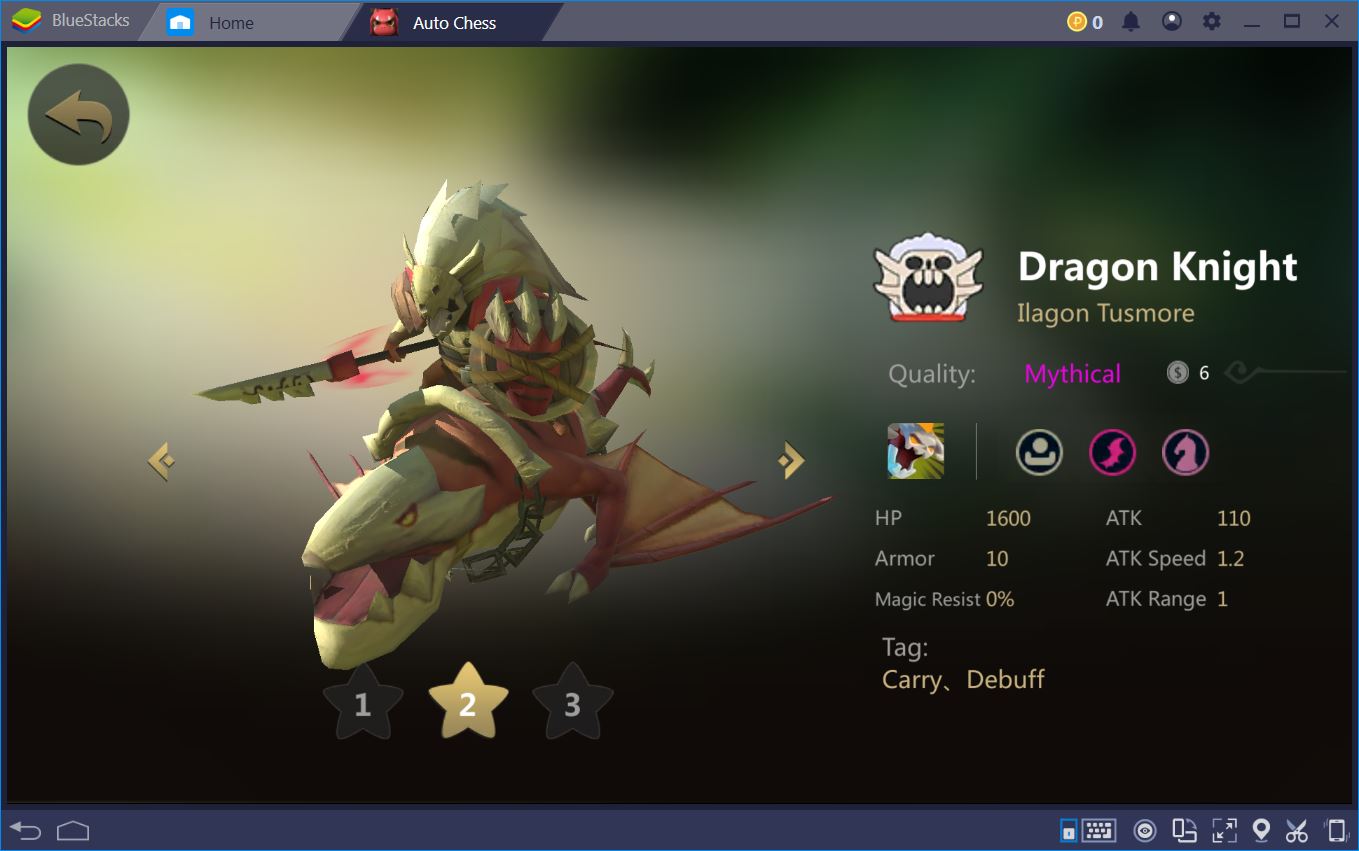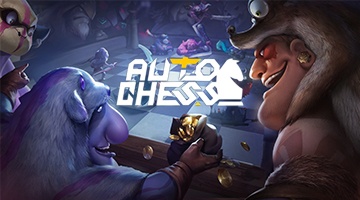Auto Chess: How to Build a Roaring Druid Team
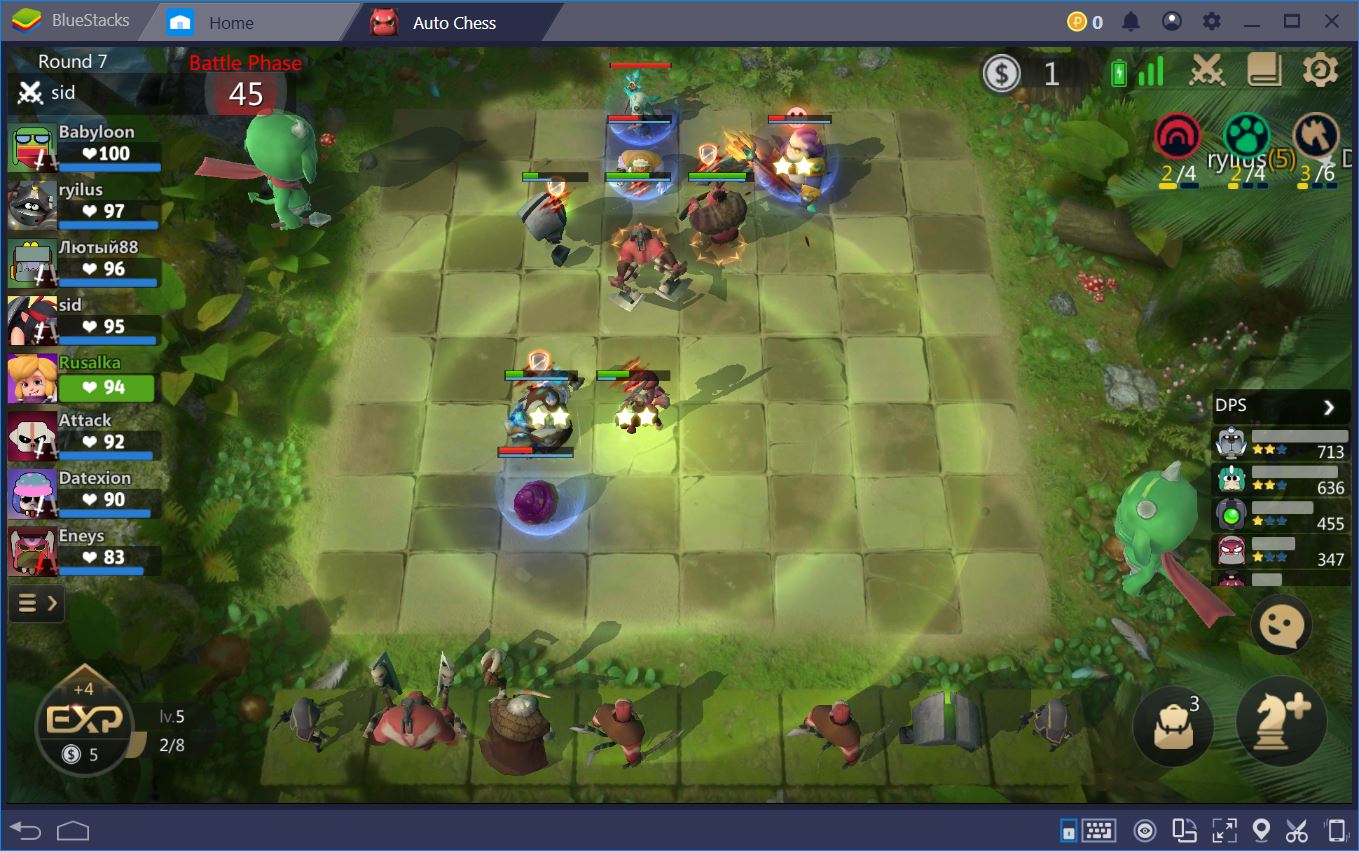
Druid synergies are not overwhelmingly strong during the late rounds of a match of Auto Chess. However, as we’ve already mentioned in our BlueStacks guide to opening strategies, they make a fantastic start and can help you build into other, more powerful strategies as they become available from the shop.
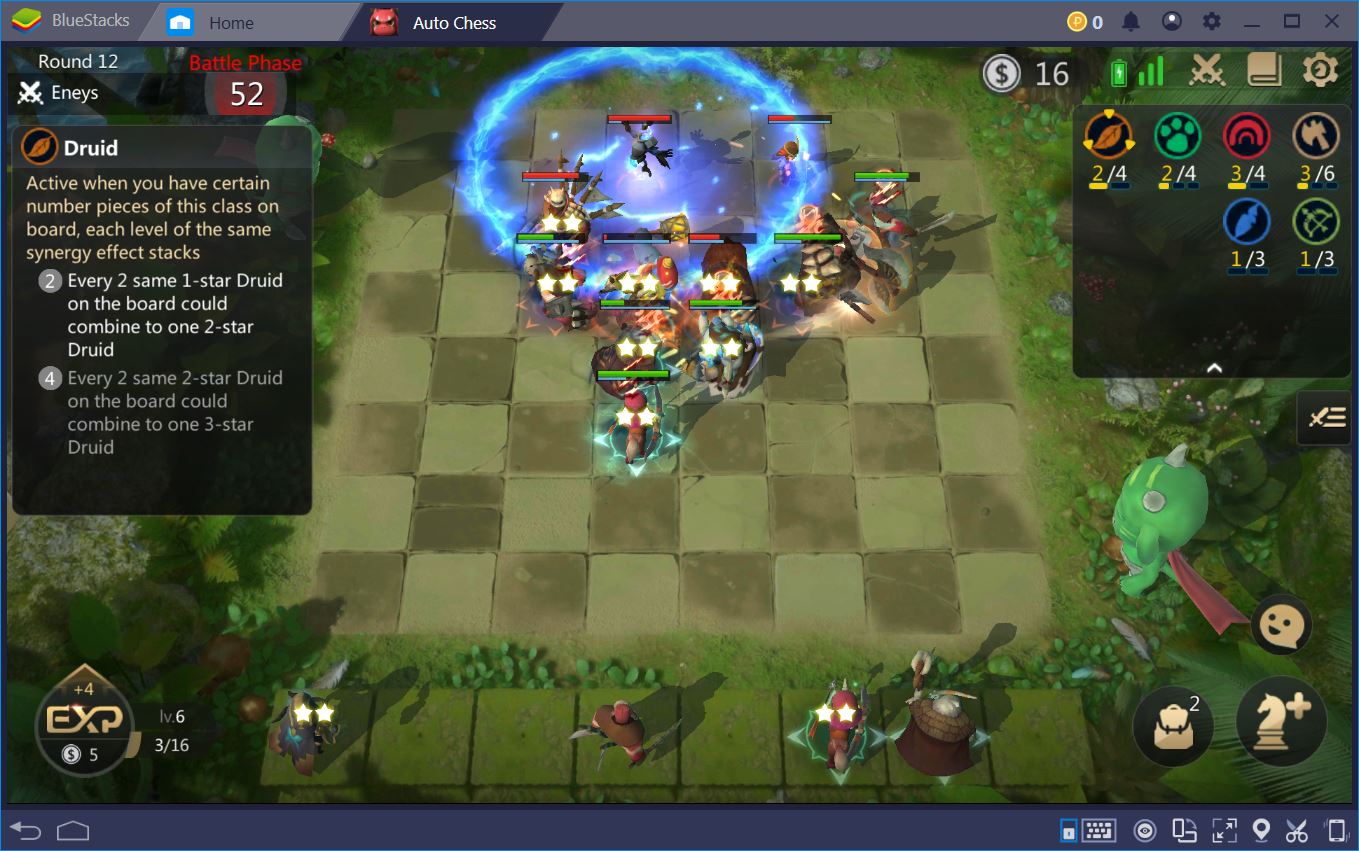
Unlike the synergies we’ve tackled before, Druids desperately need to be complemented with stronger units once you leave the early stages of a match. This means that you have to do some additional planning for your mid- and late-game transitions, but if you get it right, you can become an unstoppable force.
Understanding Your Core Pieces
Part of the fun of Auto Chess is that heroes are not just components for synergies, but have abilities and stats of their own. That’s why it’s important to be aware of the functionality of individual pieces before you decide on your long-term strategy. When it comes to Druids, there are 4 pieces (all necessary) to keep an eye out for.
Unicorn
Arguably one of the weaker units in the game, Unicorn is pretty squishy, does very little damage on 1-star, and will, more often than not, cast her heal at a bad time. You still want to buy her from the shop because you need her to count as a number in your Druid synergy, but don’t count on her to bring home any chicken dinner. Once she’s upgraded to 2-stars and 3-stars, respectively, she can be a decent damage dealer/tank against enemy units that are less leveled than she is. That’s the key. She also becomes necessary when you’re going for a Beast build.
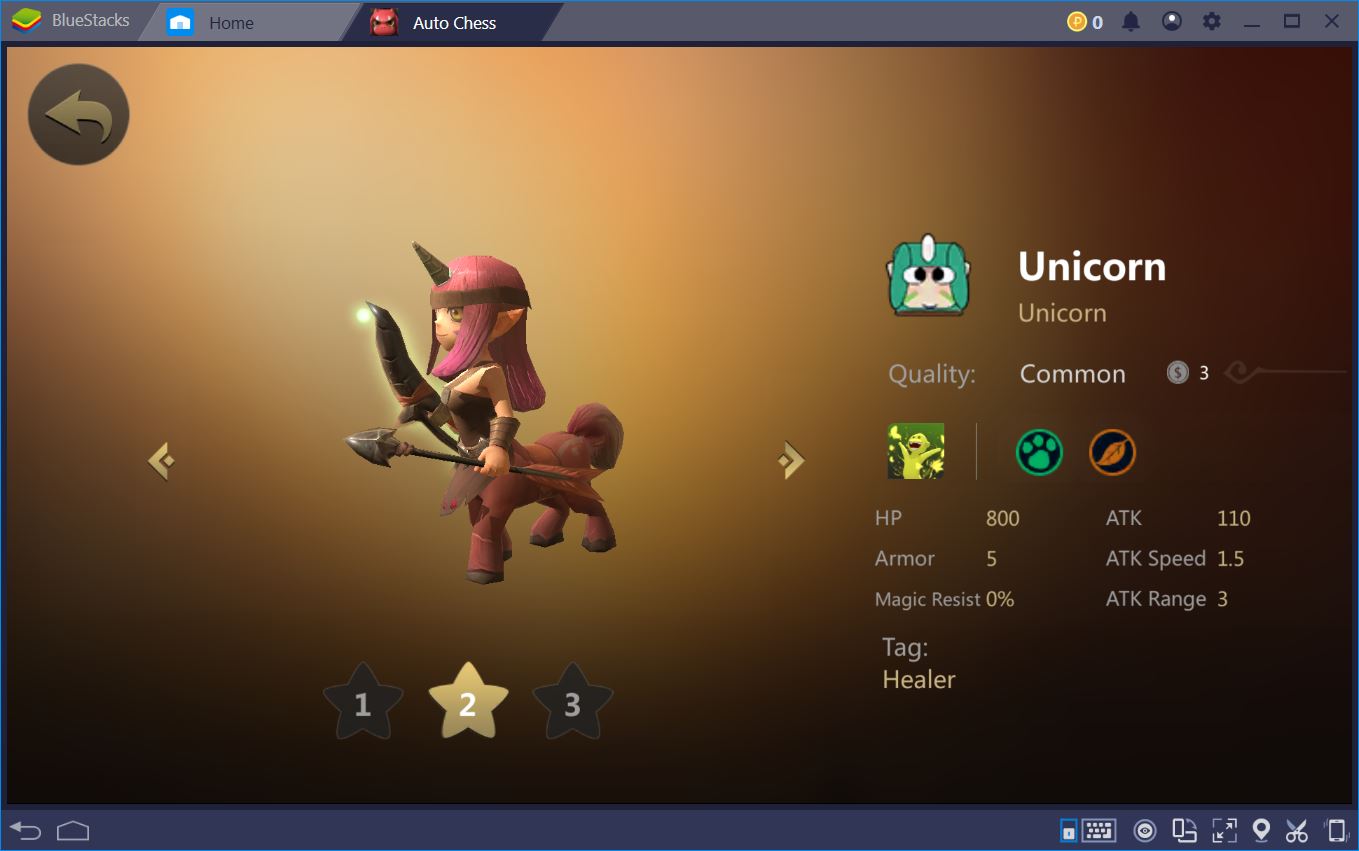
Wisper Seer
Also a pretty weak piece when taken individually, a 2- or 3-star Wisper Seer can, however, be useful in some situations thanks to his ability to spam treants. These little buggers can work as magnificent distractions in order to draw the fire of powerful enemy units while your pieces work their magic. The Wisper Seer is likely the 2nd Druid piece you’ll spot in the shop. Pick it up right away because it will allow you to start upgrading your Druids significantly faster. He’s also pretty neat for a Feathered build.
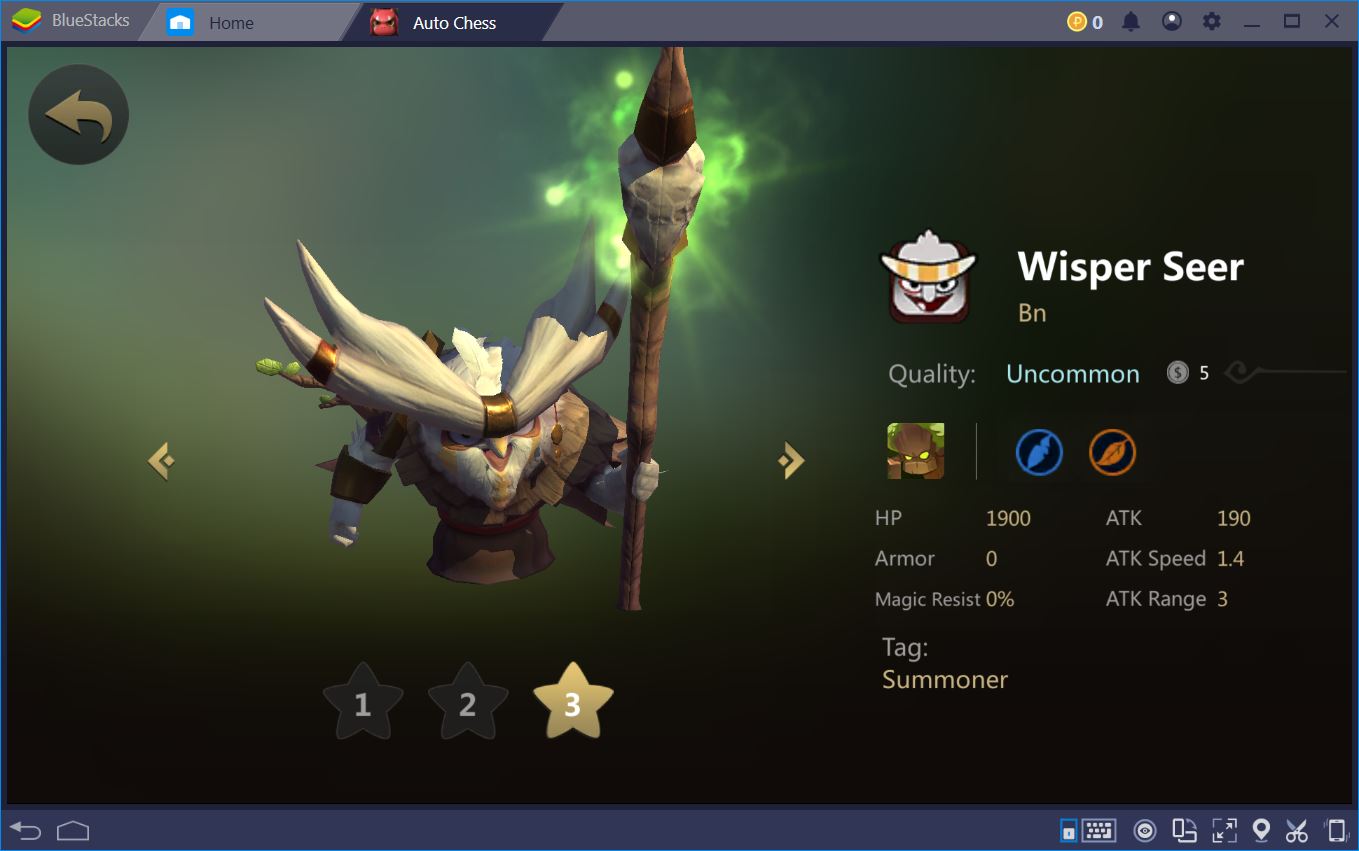
Warpwood Sage
This Druid is one the best tanks in the game. He has a bulky HP pool and gains even more survivability from his Leech Seed ability, which lets him drain the health of an enemy piece and heal all nearby friendly pieces for the same amount. He’s a rarer sight than the Unicorn and Wisper Seer when it comes to the shop, but as a 3-cost unit, he shouldn’t be too difficult to find. Like Wisper Seed, Warpwood Sage is also a Feathered unit, which makes the idea of this additional synergy very appealing.
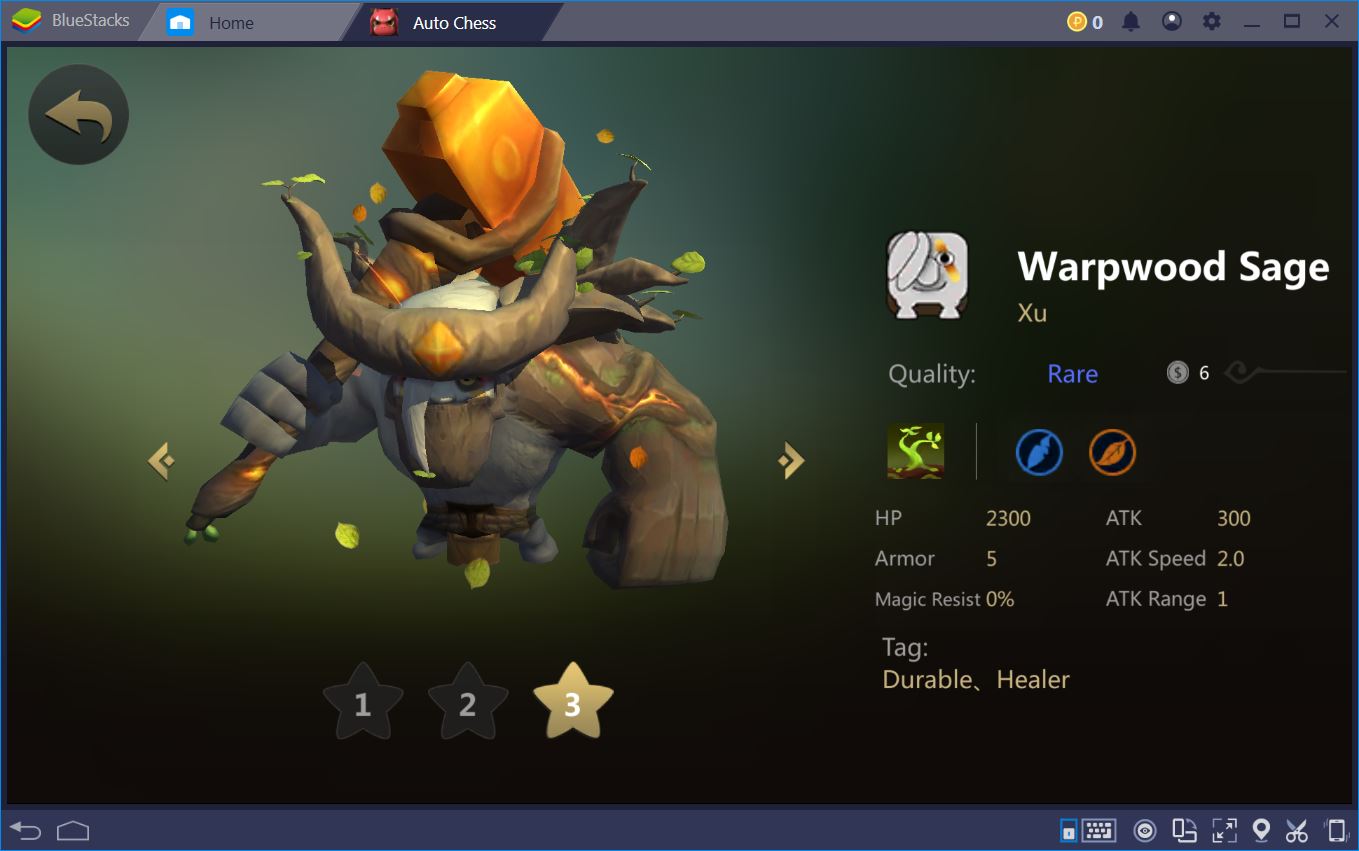
Razorclaw
One of the top-tier pieces in the game, Razorclaw is pretty OP during the mid-game, not so much for his own HP/ATK, but for those of the bear he summons. He is a Druid, which means you can bring him to 3-stars much quicker than with other epic, 4-cost units and he is Beast, which synergizes well with Unicorn and other very strong pieces like Werewolf. Whenever you see him in the shop, snatch him.
Play Auto Chess on BlueStacks 4
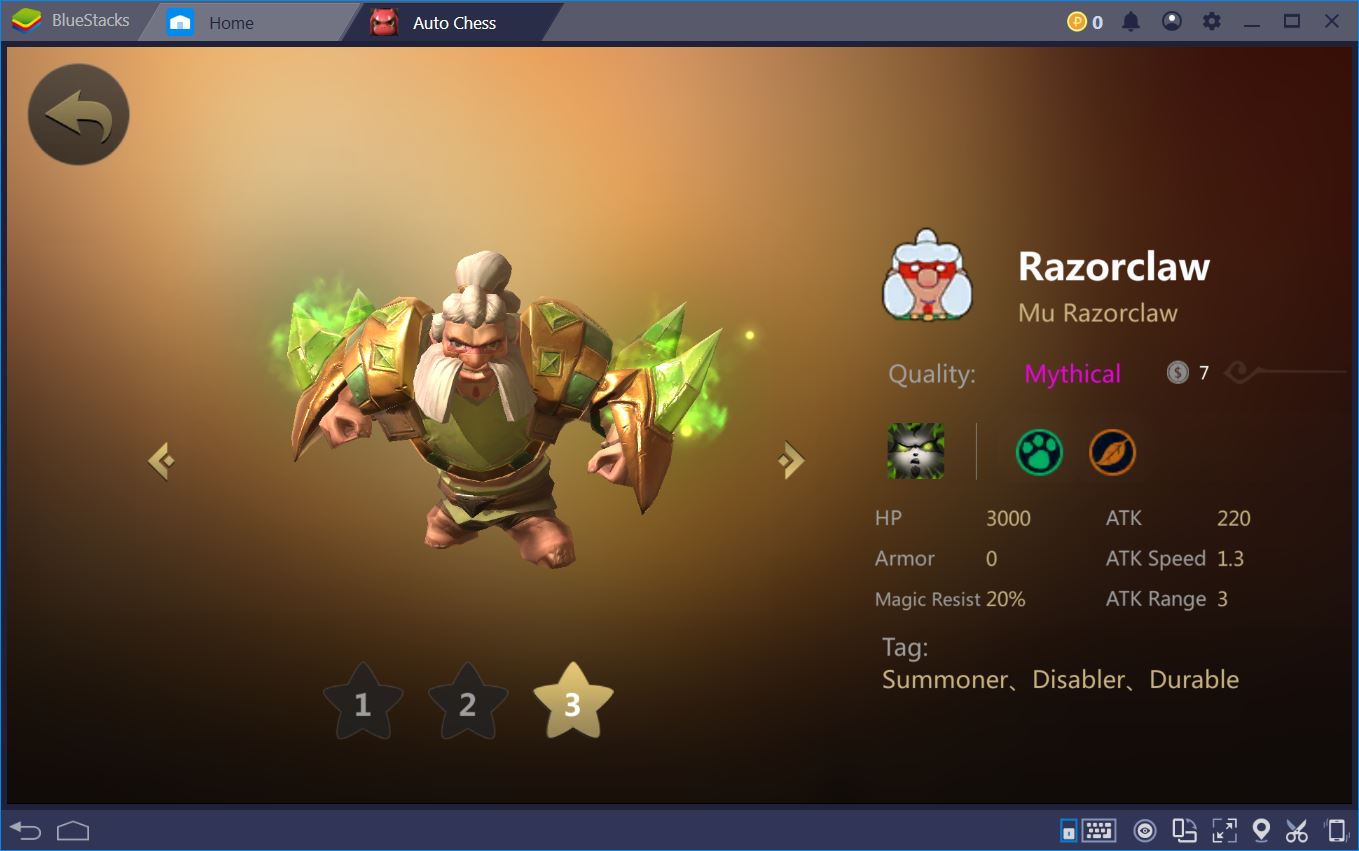
How the Druid Synergy Works
The Druid synergy is a little different from all others in Auto Chess because it offers no real on-board bonuses. With 2 different Druids deployed, however, you only need 2 copies of a Druid (as opposed to 3) in order to upgrade it to 2-stars. With 4 (all) Druids on the board, you only need 2 copies of a 2-star Druid in order to upgrade it to 3-stars.
This basically means that, if you would normally need 9 copies of a piece to get it to 3-stars, you only need 4 copies of a Druid to do the same. The difference is massive in terms of how long it takes you to buff up your units, which is where your advantage lies with this synergy. In other words, while your opponents struggle to get their core pieces to 2-stars, you’re usually sitting pretty at no less than four 3-star heroes on the board.
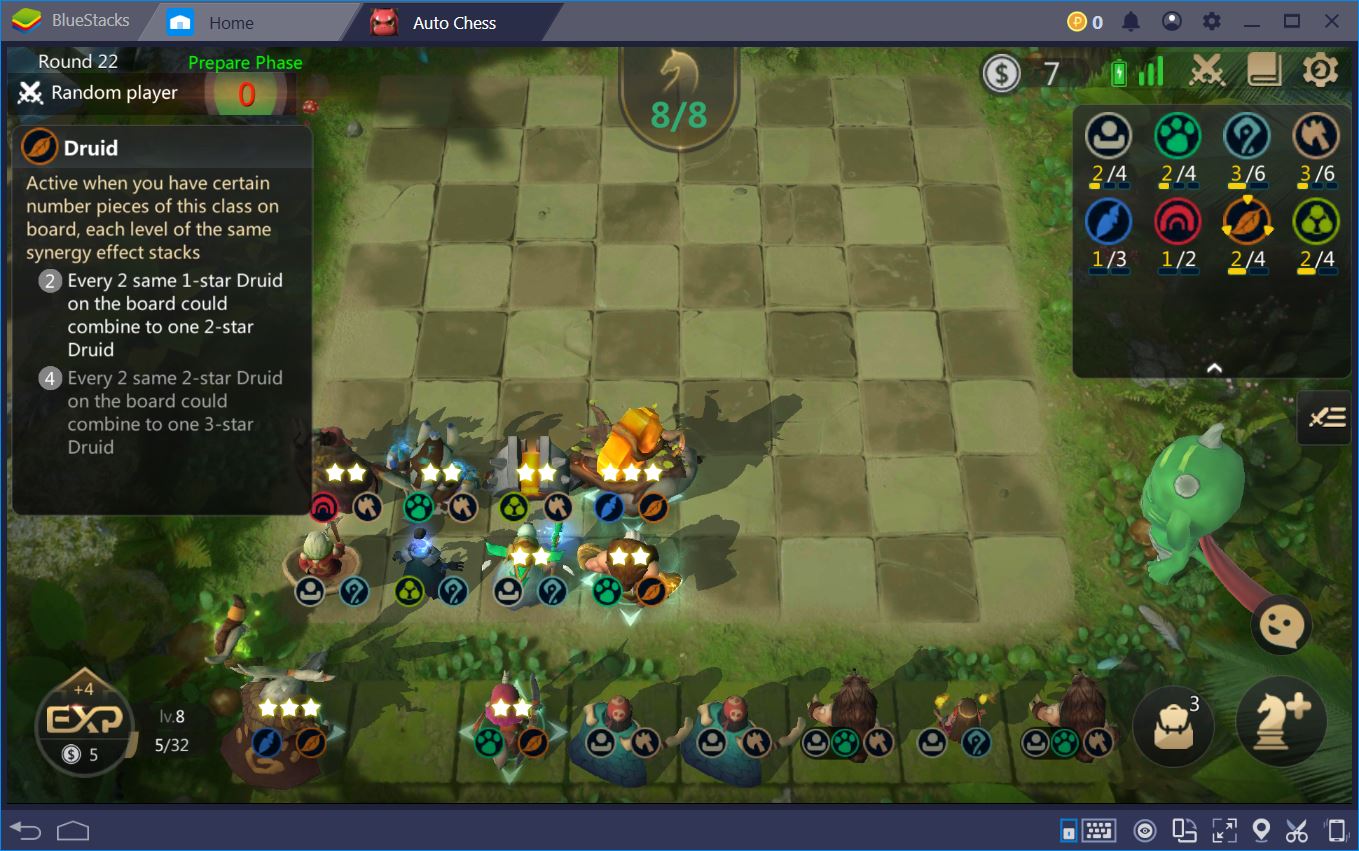
Even if you lose a few rounds at the start of the match, once all of your druids are in, you will likely have the upper hand – for a time. Because their synergy gives no actual bonuses during fights, Druids fall off fairly quickly during the mid-game. To stop this from happening and bank on your early lead, you need to plan your transitions carefully.
Possible Transitions to the Mid- and Late-Game
Presuming that your economy is strong enough (which, by all means, it should be), you’ll have a bit of gold to throw at the shop in order to get the synergies you want behind your core Druid team. A lot of the times, what you look for will, in part, have been decided earlier in the game, depending on your draws and purchases from the shop.
Some good (and excellent) synergies to consider with a Druid team are:
A 2/4 Beast (+ 6 Warrior) synergy
Two of your druids, the Unicorn and the Razorclaw, are already Beasts, which gives you a 10% ATK bonus from the start if you decide to deploy both. You can improve this synergy even further by adding two additional Beasts. The specific pieces you choose can depend on the rest of your setup, but decent picks include Werewolf, Tusk Champion, and Poisonous Worm. Since the first 2 of these are also Warriors, you could consider adding a 6-piece Warrior synergy to the mix, especially since Pirate Captain can easily be fit in for late-game potential.
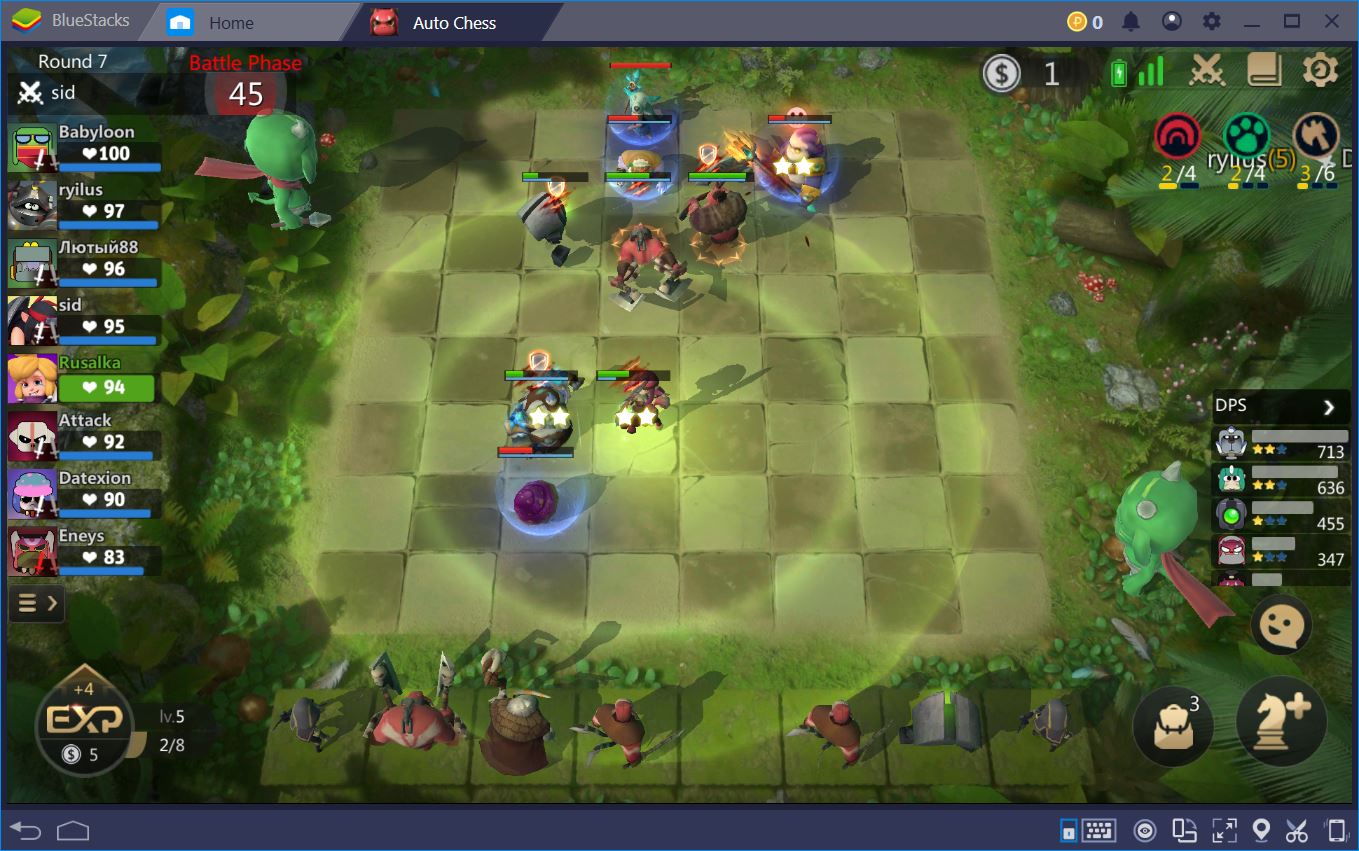
A 3 Hunter + 2 Egresis Synergy
Hunter synergies include some of the most powerful late-game units in Auto Chess, while your core Druid team can provide the necessary cover for them to issue their damage. Pair them with an additional -4 Armor Egresis bonus and you have yourself a devastating combo. Good pieces in this respect include Siren, Tsunami Stalker, Wind Ranger, and Egresis Ranger.
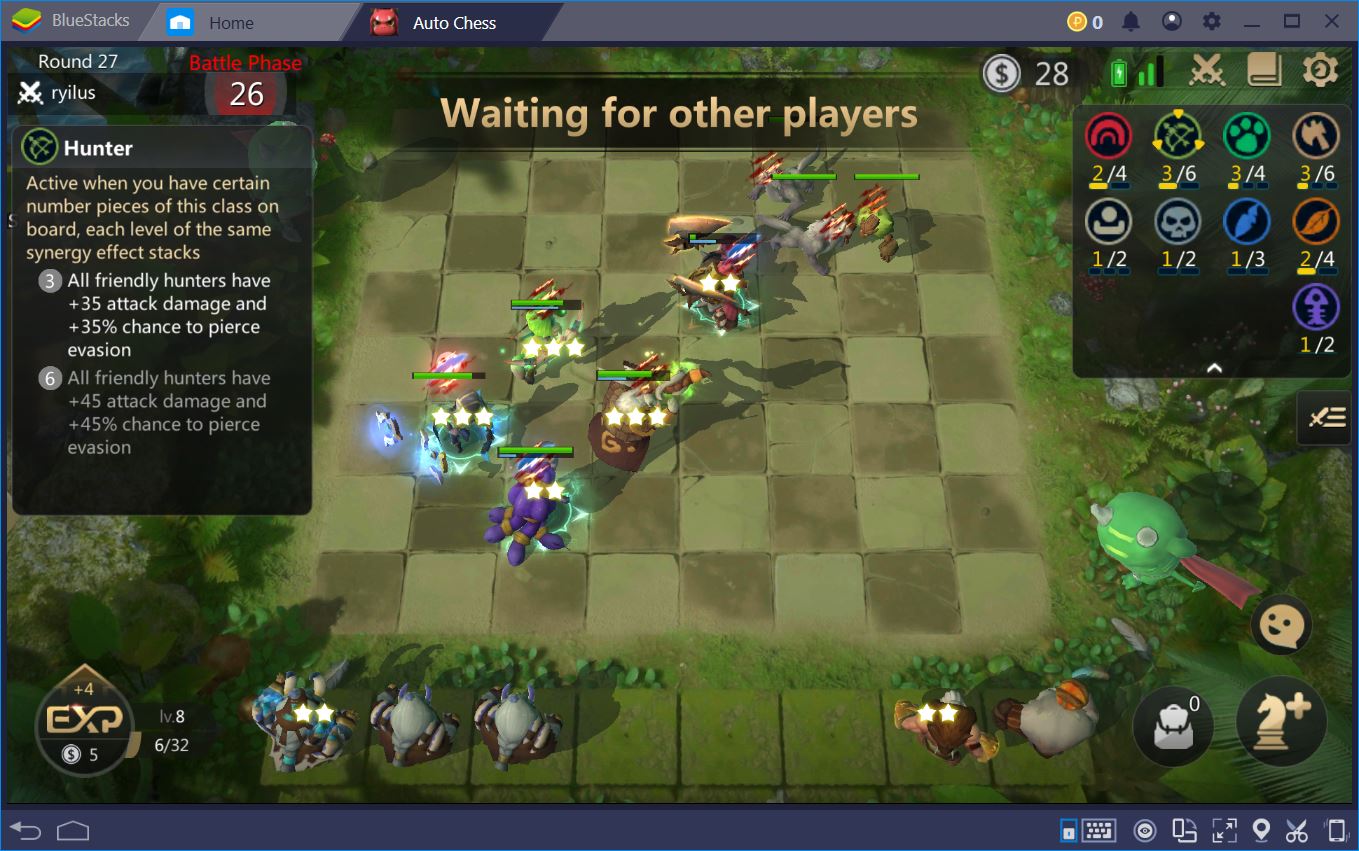
A Feathered Synergy
Two of your druids, Wispwood Seer and Warpwood Sage, are Feathered, which means you only need a third in order to get this synergy going. Because the latter offers significant evasion, it can be particularly useful on your Warpood Sage, which will likely draw most of the damage (if your positioning is correct). Going for the Wind Ranger as a third Feathered is a good way to also lay the foundation for a late-game Hunter synergy.
That’s Druids for you! This one is a strategy preferred by beginners and pros alike, both for its relative simplicity and for its high versatility. In essence, almost any late-game build can benefit from an early druid team. As we’ve seen in this guide, the Druids offer a tanky front of rushed 3-star units and can buy you more time to come up with the synergies you are looking for.

